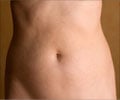Many of the newest aesthetic laser technologies in dermatology are proving useful in a variety of treatments.

AMERICAN ACADEMY OF DERMATOLOGY EXPERT
Information provided by board-certified dermatologist M. Christine Lee, MD, FAAD, assistant clinical professor of dermatologic surgery at the University of California, San Francisco and director of a private practice in Walnut Creek, Calif.
TREATMENTS FOR CELLULITE, EXCESS FAT NOW PRODUCE LONG-LASTING RESULTS
Cellulite and excess fat are two of the biggest hurdles that many women face in their quest to improve their appearance. While diet and exercise can help reduce body fat, cellulite is resistant to these types of lifestyle changes. Unique to women, Dr. Lee estimates that cellulite affects 80 percent of women regardless of their body weight. Until now, no cellulite treatment could dramatically change the appearance of cellulite, and any results were temporary.
1440 Nanometer Laser
- First minimally invasive laser treatment to treat cellulite approved by the Food and Drug Administration (FDA) in 2012 and provides long-lasting, dramatic results.
- Surgical procedure involves inserting a tiny fiber optic beneath the skin to break the fiber bands responsible for cellulite in women. The laser releases the skin and allows the depressions (or dimpling that gives cellulite its appearance) to rise to the surface of the skin. Once the laser beam severs the fiber bands, the blood supply to this area is cut off so the bands do not regrow, and collagen production is stimulated.
- Multiple areas can be treated with only one session, and the most common treatment areas are the buttocks, hips and thighs.
- Some downtime is required after the procedure, due to bruising and swelling that can take one to two weeks to resolve.
Cryolipolysis
- Non-invasive procedure approved by the FDA to remove localized areas of fat in the lower abdomen and along the sides of the body.
- Works by freezing the lipids in fat cells, which then slowly dissolve without injuring surrounding tissues.
- Typically, three treatments are needed to dissolve an inch of fat.
- Results are not immediate, as it takes three to four months to see a noticeable improvement.
Advertisement
- Non-invasive procedure approved by the FDA uses high-intensity, focused ultrasound energy to destroy or melt targeted fat without harming surrounding skin.
- Used to reduce fat bulges in the abdomen, with the average reduction of about an inch per treatment session. Can also be used on the thighs or other large areas of fat.
- Results are not immediate, requiring two to three months.
- An added benefit is noticeable improvement in the appearance of cellulite in the months following the procedure.
These newer treatments provide alternatives to liposuction, which has been used to remove pockets of fat for decades but is more invasive and requires more downtime. Dr. Lee noted that many people prefer these newer fat-reduction treatments because they are not invasive and require little or no downtime for healing.
Advertisement
The appeal of a tattoo may wear off after time for some people, eventually leading them to turn to laser therapy to erase this form of body art. While dermatologists pioneered the use of laser therapy for tattoo removal, the process of removing tattoo ink has remained far from perfect over the years. Previously, the nanosecond laser (Q-switched YAG) would shatter tattoo pigment similar to how a rock can shatter into pebbles - and the laser then would destroy these pebbles of color. Nanosecond lasers could not treat resistant colors, such as blue and green. Now, the newest development in laser tattoo removal is effectively targeting these difficult colors.
Picosecond Laser
- First FDA-approved picosecond laser introduced in 2013 uses very short pulse durations.
- The shorter the pulse duration, the better it can break down tattoo pigment.
- The picosecond laser improves on this process, as it breaks down the pigment into finer particles similar to dust particles instead of pebbles. These dust particles are then absorbed by the skin and the body disposes them.
o Tattoos can now be removed with fewer treatments than previous lasers.
o Recent studies have shown that performing multiple treatments on a tattoo during a single office visit can improve the results. Dr. Lee explained that she waits about 10 to 20 minutes after the first treatment before performing the next treatment.
SAVING FACE WITH SKIN TIGHTENING /SKIN RESURFACING
Improving the appearance of aging facial skin remains among the most sought-after aesthetic treatments, and Dr. Lee explained that many of the most effective laser technologies for aging skin are continually being refined to further enhance results. Now, lasers can soften fine lines and wrinkles, improve the appearance of acne scars, and tighten sagging skin on the face and virtually any part of the body.
Ultrasound and Radiofrequency for Skin Tightening
- Ultrasound technology is a non-invasive procedure that is approved by the FDA to lift and tighten skin on the neck, chin and eyebrow area.
- While this ultrasound technology does not penetrate as deeply as the ultrasound device used to melt fat, dermatologists have the ability to vary the depths of treatment depending on the extent of skin sagging without compromising the skin''s surface.
- Optimal results are visible within four months, with some tightening noticeable within the first month.
- Results from one treatment session last one year, on average.
- Radiofrequency energy is a non-invasive procedure that is FDA approved to treat aging facial skin and sagging eyelids, but Dr. Lee noted that dermatologists can use the technology to treat sagging skin on virtually any part of the body.
- As a result of improvements in technology, now only one treatment is needed whereas two treatments were needed previously.
- Similar to ultrasound, noticeable skin tightening starts to occur within one month of treatment, with optimal results visible in four months.
- Both ultrasound and radiofrequency provide a secondary benefit of improving the appearance of acne scarring.
- Minimal downtime is a benefit of both ultrasound and radiofrequency procedures.
Fractionated CO2 Laser for Wrinkles, Acne Scars
- The first generation CO2 laser used for skin resurfacing was originally considered the gold standard for skin resurfacing, as it produced superior results. However, a lengthy healing time was needed because the laser created deep wounds in the skin.
- A lower-powered fractionated CO2 laser was the next generation of this laser to be introduced, which significantly improved downtime while delivering excellent results.
o The ablative fractional laser delivers energy to the deeper layers of skin, which stimulates new collagen without injuring the skin''s surface.
o Overall, the fractionated CO2 laser is safer, has fewer side effects, and is better tolerated than the original CO2 laser while still producing gold-standard results.
- Fractionated CO2 laser is now the preferred treatment for wrinkles and acne scars.
AMERICAN ACADEMY OF DERMATOLOGY EXPERT ADVICE:
"Unfortunately, people often are misled by ads and Internet sites promoting costly procedures to improve the skin that may not be the best options for their particular needs," said Dr. Lee. "That's why it's so important to research all the options available, as new technologies are introduced all the time. A board-certified dermatologist who is an expert in cosmetic procedures can present the pros and cons of each new technology and offer the best recommendations for each patient."
Headquartered in Schaumburg, Ill., the American Academy of Dermatology (Academy), founded in 1938, is the largest, most influential, and most representative of all dermatologic associations. With a membership of more than 17,000 physicians worldwide, the Academy is committed to: advancing the diagnosis and medical, surgical and cosmetic treatment of the skin, hair and nails; advocating high standards in clinical practice, education, and research in dermatology; and supporting and enhancing patient care for a lifetime of healthier skin, hair and nails. For more information, contact the Academy at 1-888-462-DERM (3376) or www.aad.org. Follow the Academy on Facebook (American Academy of Dermatology) or Twitter (@AADskin).
Source-Newswise














